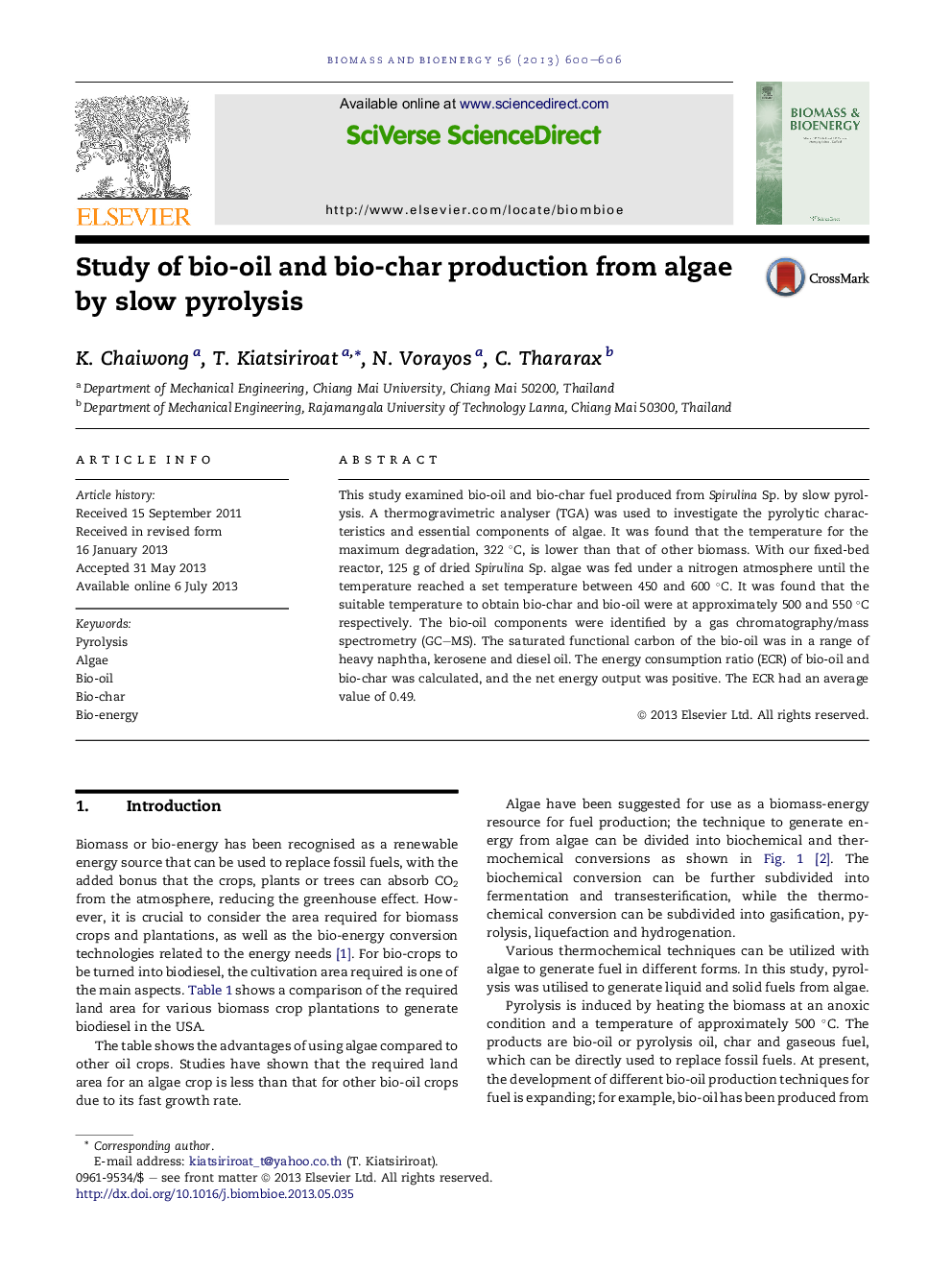| Article ID | Journal | Published Year | Pages | File Type |
|---|---|---|---|---|
| 7065295 | Biomass and Bioenergy | 2013 | 7 Pages |
Abstract
This study examined bio-oil and bio-char fuel produced from Spirulina Sp. by slow pyrolysis. A thermogravimetric analyser (TGA) was used to investigate the pyrolytic characteristics and essential components of algae. It was found that the temperature for the maximum degradation, 322 °C, is lower than that of other biomass. With our fixed-bed reactor, 125 g of dried Spirulina Sp. algae was fed under a nitrogen atmosphere until the temperature reached a set temperature between 450 and 600 °C. It was found that the suitable temperature to obtain bio-char and bio-oil were at approximately 500 and 550 °C respectively. The bio-oil components were identified by a gas chromatography/mass spectrometry (GC-MS). The saturated functional carbon of the bio-oil was in a range of heavy naphtha, kerosene and diesel oil. The energy consumption ratio (ECR) of bio-oil and bio-char was calculated, and the net energy output was positive. The ECR had an average value of 0.49.
Related Topics
Physical Sciences and Engineering
Chemical Engineering
Process Chemistry and Technology
Authors
K. Chaiwong, T. Kiatsiriroat, N. Vorayos, C. Thararax,
